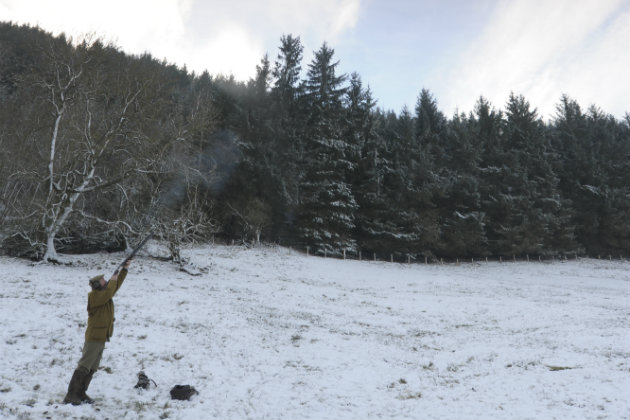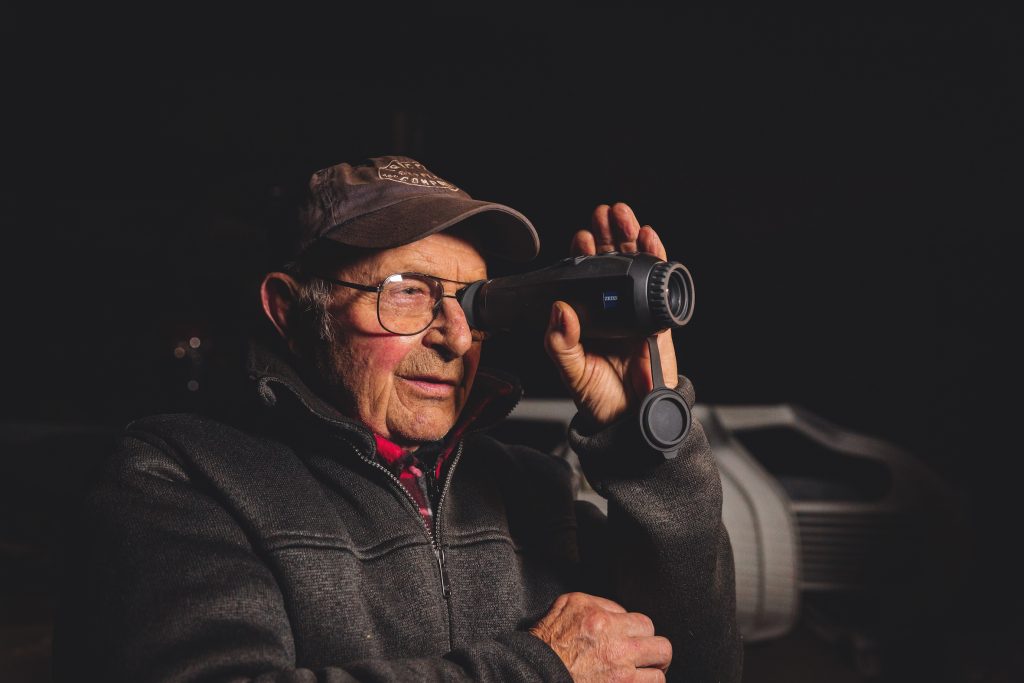Win CENS ProFlex DX5 earplugs worth £1,149 – enter here
How NOT to waste a shot

Each year at our shoot, we have a day, usually in June, when we gather to shoot a few clays and have a BBQ. Last year, to add some interest, I set up a pattern plate and the guests were invited to test their guns and cartridges. A good many shooters have never pattern tested their guns and shoot full choke heavy loads on shoots where the birds are no more than 30 yards; others are shooting at extreme birds with open chokes and light loads.
Extreme range
Extreme range means different distances to different people; 55 yards to some guns is a very long shot. Indeed it is, because whatever gun/cartridge combination you use, the pattern starts to fail and the velocity has dropped dramatically beyond 55 yards. Other shooters who are tooled up with 32” barrels, full chokes and 36 grams or more of No.4 shot think 80 yards and more is a shootable bird. A No.4 pellet at 80 yards will retain enough energy for a kill at this range, but to retain a pattern at 80 yards in order to consistently put three pellets into a bird is doubtful.
What does work
Twenty-nine grams of No.6 shot from an improved cylinder gun is quite adequate for birds up to 45 yards. There are approximately 275 pellets in 29 grams of No.6 shot and an improved cylinder gun will put approximately 42 per cent of the shot into a 30” circle at 45 yards. Therefore the pattern would be approximately 115 pellets in a 30” circle. A No.6 pellet would have approximately 1.5ftlb energy at 45 yards.
At the other end of the scale a fully choked gun would put 100 per cent of the load into a 30” circle at 30 yards, dropping off by approximately 16 per cent for each five yards after 30 yards and up to 50 yards. After 50 yards a further one per five yards of travel; from 50 yards to 55 yards – 17 per cent drop off; 55 yards to 60 yards – 18 per cent, and so on. At 80 yards it will be down to approximately 12 per cent of the load.
The pattern is lost at 80 yards
Thirty-six grams of No.4 shot contains approximately 215 pellets, so 12 per cent equates to 25 pellets in a 30” circle. The area of a 30” circle is approximately 700sqins. The vulnerable area of a pheasant is approximately 20sqins. So the 700sqins of the 30” circle divided by 25 pellets equates to 28sqins per pellet. The chance of a multiple strike would be remote; a missed or wounded bird more likely. Twelve per cent of the load in a 30” circle at 80 yards is on a static pattern plate – a moving target is another matter.
A full choked gun would create a shot column approximately 20ft long at 80 yards distance. The last pellets in the column would only reach the target approximately four hundreds of one second after the first pellets. In four hundredths of one second, a bird flying at 40mph or 700 inches per second would have travelled approximately 28 inches and it would have almost cleared the 30” circle, making any strike unlikely. Neither the bird nor the pellets can be in two places at the same time. The last pellets in the column would only arrive after the bird has passed. Possibly this is why some of these extreme bird shoots only average a shot to kill ratio of 10:1 or worse.
Penetration problems
A No.4 pellet with a muzzle velocity of 1,450ftps would arrive at a bird 80 yards away at approximately 450ftps. I’ll spare you the calculations but this pellet will have 1.15ftlb of energy at 80 yards. This is on the edge of adequate penetration, but the pattern is lost. Using the same fully choked gun and 36 grams of No.4 shot on a 30 yard bird, at which range a great number of birds are shot, would result in 100 per cent of the 215 pellets in a 30” circle with a possible strike in excess of eight pellets in the bird. The energy of each pellet at this range would be more than 4ftlbs.
Thirty-six grams of No.5 shot, containing 279 pellets, when using a fully choked gun, would put 12 per cent of the load into a 30” circle at 80 yards. This would mean 33 pellets into the 700sqins and 22sqin per pellet. This again is an inadequate pattern. And the energy of a No.5 pellet at 80 yards would be approximately 0.7ftlb. This would only result in bruising the bird or lodging the odd pellet under the skin.
The same load of 36 grams of No.5 shot and the same fully choked gun at 55 yards would give a pattern of approximately 40 per cent of the 279 pellets, which is 100 plus in the 30” circle, making a three pellet strike probable, with an adequate 1.6ftlb energy for a clean kill.
Get your yardage right
To consistently strike a bird the size of a pheasant with three pellets, you therefore need a minimum pattern of 100 pellets in a 30” circle, together with a minimum of 1ftlb energy per pellet on impact for a clean kill. A No.4 pellet at 70 yards would have approximately 1.43ftlb energy on impact, but at this range you would only put 45 pellets into a 30” circle, even with a fully choked gun and 36 grams of No.4 shot. To place 100 No.4 pellets into a 30” circle at 70 yards you would need a load of over 80 grams. At 60 yards with the same gun and cartridge, you would place approximately 70 pellets in a 30” circle. This would have a chance of striking the bird with two pellets.
At 55 yards, with the same gun and cartridge, you would place approximately 86 pellets in a 30” circle. This is really the maximum range for consistently clean kills, not wounding birds to be picked maybe next day and added to the next shoot game cart.
Know your limits
It can be seen from the patterns of various loads and various guns which combination is suitable for different birds at different ranges; also it demonstrates that pattern fails before penetration. The number of pellets and percentages quoted throughout this article are not definitive, of course. They are an average over several shots from the same guns and cartridge. All cartridges used in testing were high velocity fibre wad.
Knowing the limits of both your gun and cartridge, and the spread and penetration of different loads at different ranges, will not make you shoot any better, but it will help you to avoid wounding or spoiling birds and ultimately increase your overall enjoyment of the day.
Related Articles
Get the latest news delivered direct to your door
Subscribe to Shooting Times & Country
Discover the ultimate companion for field sports enthusiasts with Shooting Times & Country Magazine, the UK’s leading weekly publication that has been at the forefront of shooting culture since 1882. Subscribers gain access to expert tips, comprehensive gear reviews, seasonal advice and a vibrant community of like-minded shooters.
Save on shop price when you subscribe with weekly issues featuring in-depth articles on gundog training, exclusive member offers and access to the digital back issue library. A Shooting Times & Country subscription is more than a magazine, don’t just read about the countryside; immerse yourself in its most authoritative and engaging publication.







